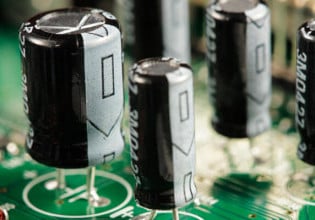Researchers Develop a Potential Sustainable Sodium Battery
University researchers develop the latest sodium-ion based battery solution.
A team of researchers from Washington State University (WSU) and Pacific Northwest National Laboratory (PNNL) recently delivered a new battery technology into the energy space. The new battery technology is sodium-based as opposed to conventional lithium-ion battery (LIB) technology. Though there are other sodium ion-based batteries (SIBs) on the market, this new development from WSU and PNNL promises the best performance yet seen in terms of energy capacity and lifetime endurance.
Ph.D. graduate student from WSU and colleagues developed a new sodium-ion battery that rivals lithium models. Image used courtesy of Washington State University
Dr. Imre Gyuk from the U.S. Department of Energy said “this is a major development for sodium-ion batteries.”
It is evident when reviewing research and news on battery technology that there is a desire to find better alternatives to LIBs. At present, LIBs fall short in a few key areas. They are made from materials including cobalt that is rare, expensive, and environmentally unsustainable for nations that harvest this element. The mining and extraction of this element can enable exposure to high doses. High concentrations leaching out from mines have been known to lead to water pollutants, crop contamination, and soil infertility. Links to lung disease, heart failure, and cancer have also been investigated.
An additional setback to LIB use is the accessibility of the material. It is simply not found in convenient locations for extraction. In contrast, sodium is found in abundance within the oceans of the world. Sodium’s availability and its lower impact on the environment make it the next material of choice in battery innovations for the future. Despite this, there are some challenges that need to be overcome.
A New Sodium-Ion Battery Solution
Until the technological breakthrough of WSU and PNNL researchers, SIBs have been limited in their use due to low energy carrying capacity and short lifespan. A particular hurdle facing researchers is that the sodium ion cathode tends to accumulate crystals at its surface. These crystals can slow the flow of sodium ions and consequently stop the battery from working.
In order to tackle this problem, the University researchers developed a layered metal oxide and a liquid electrolyte containing extra sodium ions. The researchers observed that their electrolyte concoction had a better interaction with the cathode. This enabled the improved flow of sodium ions, and prevented surface crystal build-up. Ultimately this enhances electricity generation.
Crystalized salt. Image used courtesy of Pixabay
Lead researcher of WSU’s School of Mechanical and Materials Engineering, Yuehe Lin, said that the research conducted so far “revealed the essential correlation between cathode structure evolution and surface interaction with the electrolyte.” Lin added, “these are the best results ever reported for a sodium-ion battery with a layered cathode, showing that this is a viable technology that can be comparable to lithium-ion batteries.”
Lin and his fellow colleagues are using their valuable insights to create more practical SIBs that use minimal quantities of cobalt or that are cobalt-free. Sodium-based batteries of the future may soon replace the use of lithium and cobalt-based designs.






